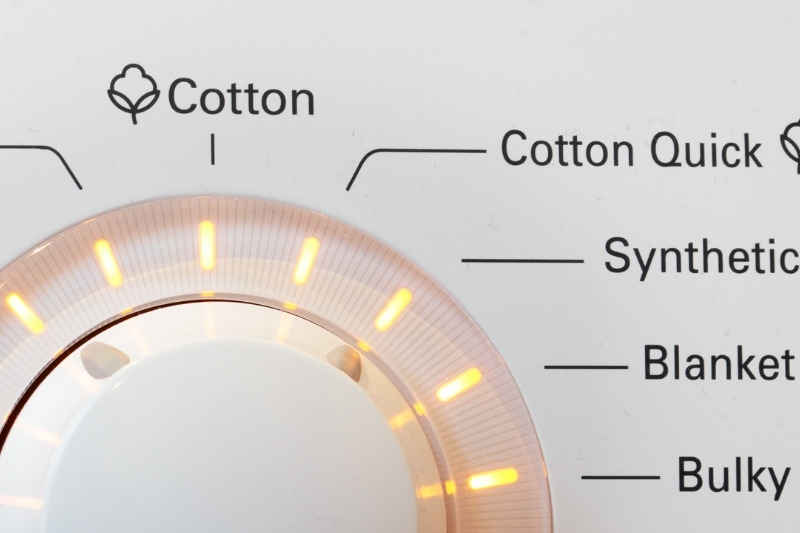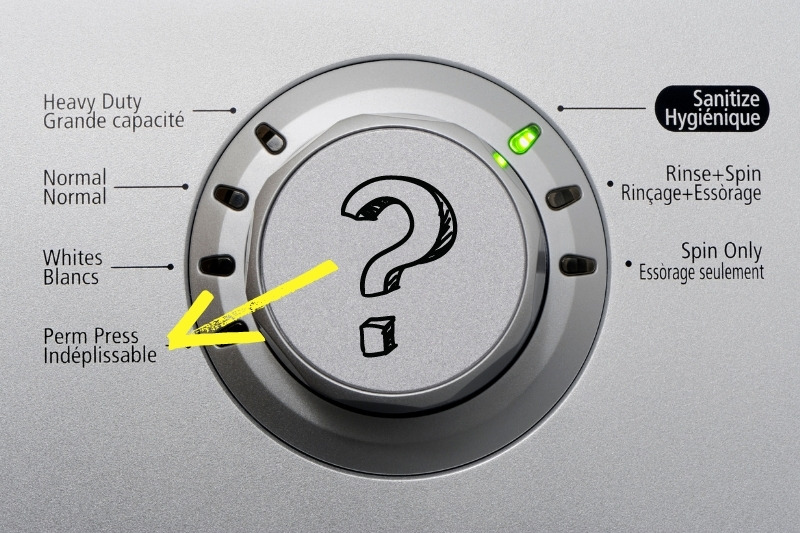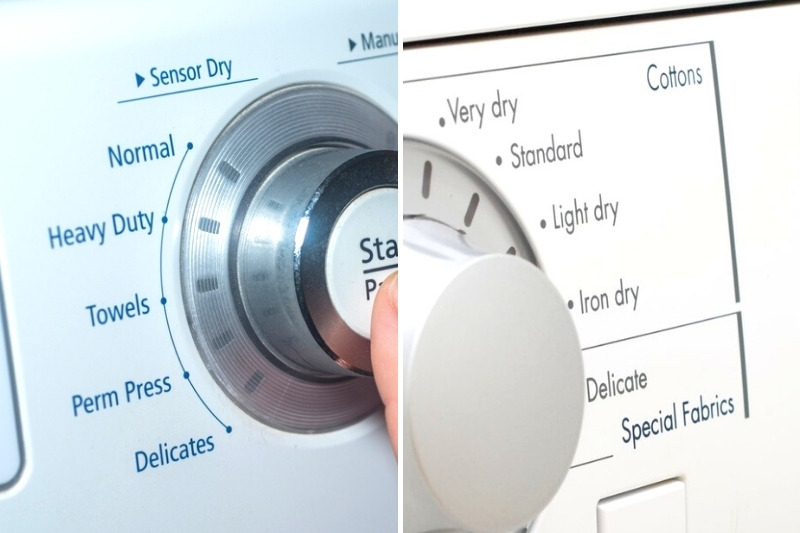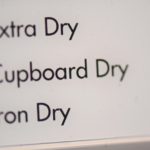Selecting the right wash cycle for your clothes is crucial when it comes to extending the life of your garments and preventing fading, warping and shrinkage. But with so many options to choose from on modern machines, which should you go for?
In this post, we’ll take a closer look at the differences between permanent press and cotton cycles to help you choose the best setting for your items.
What Is a Cotton Wash Cycle?

Cotton wash cycles are specifically designed for cleaning hardwearing natural fabrics, but they are often used as the go-to setting for everyday garments.
Cotton cycles tend to be longer than other cycles with a higher level of agitation, and they may feature a pre-wash cycle too. This is because cotton holds onto dirt more than other fabrics, so a strong cleaning action is needed to remove deep-seated grime and stains.
Likewise, a faster spin speed is required to remove excess water, as cotton is much more absorbent than manmade materials.
Temperatures for cotton cycles vary from 40°C all the way up to 90°C depending on the items you’re washing.
For normally soiled items and colours, 40°C is ideal, while 60-90°C cycles can help to brighten whites and rid towels and bed sheets of bacteria.
Just make sure the fabrics you’re washing are 100% cotton, otherwise, you run the risk of shrinking them.
What Does Permanent Press Mean on a Washing Machine?

Gentler than a cotton cycle, the permanent press setting on your washing machine is designed to reduce wrinkles and can be used for a variety of different garments.
From items that have been chemically treated to reduce wrinkles to synthetics like polyester, acrylic and elastane, this cooler, slower cycle is ideal.
Sometimes labelled as a “wrinkle control” or “casual” cycle on front loading machines, the permanent press cycle is also suitable for lightweight clothing made from natural fibres that creases easily, as well as non-iron fabrics and normally soiled items that don’t need a quite so vigorous cotton wash.
Temperatures average 30-40°C, with some cycles including a cold rinse. This, along with the mild agitation and slow spin speed, helps to limit the chance of wrinkles setting in.
But don’t leave items in the machine for too long after the cycle ends, as there are no guarantees!
Should You Wash on a Permanent Press or Cotton Cycle?

The main difference between permanent press and cotton cycles is the amount of heat that is used.
A permanent press cycle is designed to use less heat, which means it’s better for delicate fabrics and helps to reduce creasing.
Meanwhile, cotton cycles use higher temperatures and more agitation to provide a more thorough clean for sturdier materials.
Therefore, cotton cycles are ideal for heavily soiled items and durable sheets, towels, washable rugs, jeans and cotton clothes, but they aren’t gentle enough for fragile synthetics. This is due to their high agitation and fast spin speed, which can cause pilling and wrinkles that need ironing out, often something that isn’t possible when it comes to manmade items.
Similarly, if you use too high a temperature, you could melt the fibres of your synthetic clothing, stretch garments out of shape or fade brightly coloured materials.
With that in mind, permanent press cycles are more suitable for gym clothes, swimwear and other synthetic garments, along with lightweight blouses and vibrant items that aren’t especially dirty.
You should also use this setting for any items that can’t be ironed, so always check the tag first.
Permanent Press vs. Cotton Dryer Cycles

Just like a permanent press wash cycle, the corresponding tumble dryer setting uses less heat than a cotton cycle. This is because synthetic fabrics absorb less water than natural materials, so they dry much faster.
Permanent press cycles also have the added benefit of helping to prevent wrinkles, especially when lightly loaded with items of similar weight.
Just remember to hang or fold items straight away to avoid a crumpled pile of items that can’t be ironed.
Cotton drying cycles, on the other hand, utilise higher temperatures between 65-70°C to effectively dry heavyweight fabrics.
While this can lead to wrinkles, these can be ironed out relatively easily. Alternatively, you can part-dry your garments then hang them to dry naturally, which will enable any creases to fall out naturally.
The key thing is to check the care label on your clothes and separate cottons and synthetics so they can be washed and dried on appropriate cycles. If you come across a synthetic blend, always opt for a cooler and gentler permanent press setting over a cotton cycle.
Keen to discover more useful laundry tips? From the cheapest time of day to use a washer and dryer to the best detergents for maintaining coloured clothes, we’ve got you covered.

A proud Yorkshire lass with a love for movies, music and cosy nights in! Once a self-confessed avoider of cleaning, she’s always on the lookout for new ways to make household chores as quick and simple as possible.






